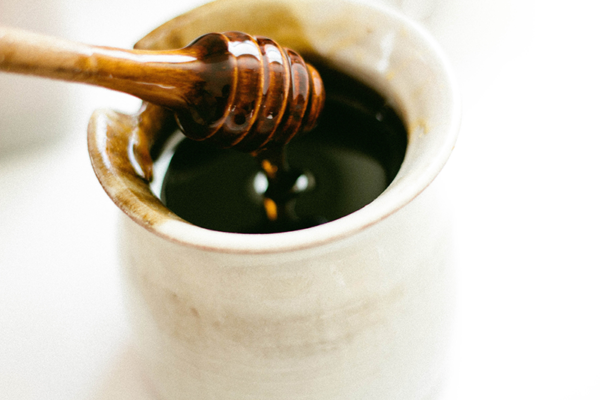Nature’s Tasty Superfood
Almost everything just tastes better with a little bit of honey. And double bonus, raw honey is packed with nutritional and therapeutic goodies. Honey has been used for centuries to treat ailments, wounds and to heal gut conditions; the ancient Egyptians, Assyrians, Chinese, Romans and Greeks all used it.
The health benefits of honey are backed by extensive research. Raw honey is composed of roughly 200 substances such as amino acids, flavonoids, polyphenols, antioxidants, minerals, vitamins and enzymes which makes it a nutrient and energy-packed taste blast. But what is raw honey, exactly?
Raw honey vs. pasteurised honey
 Raw honey has not been processed. It contains the beneficial substances and heat sensitive antioxidants which are destroyed through pasteurisation and the beneficial nutrients like pollen, enzymes and antioxidants removed though filtration.
Raw honey has not been processed. It contains the beneficial substances and heat sensitive antioxidants which are destroyed through pasteurisation and the beneficial nutrients like pollen, enzymes and antioxidants removed though filtration.
Raw honey is more nutritious and does not have any added sugars or sweeteners, which can be present in some commercial honeys. If you buy honey with bits mixed in, then your honey has undergone very little, if any, processing.
Heat honey to 700c and then filter it and it will look lovely on a shop shelf, but there are costs.
What is raw honey?
Raw honey simply means nothing has been done to it. It has not been heated above natural hive temperatures, nor put through fine high-pressure filtering. Raw honey is spun straight from the honey frame and bottled. The honey is in its most pure, natural form ready to be enjoyed.
Our raw honey is in its purest form, the way nature intended.
What is processed honey?
Pasteurisation
The production of processed honey involves pasteurisation before it is bottled.
Many commercial honey producers heat honey to delay granulation. Some consumers incorrectly believe that granulated honey has “gone off” and will therefore not purchase it.
When honey is heated up to 70oc it is at the point where no microorganisms can survive. While this practice could be beneficial because it gets rid of any dangerous bacteria, pasteurising honey also gets rid of all beneficial microorganisms.
Filtration
All honey crystallises eventually, but some consumers prefer liquid honey. The presence of fine, suspended material, such as propolis (parts of the honeycomb), bee pollen and air bubbles result in a cloudy appearance and contributes to faster crystallisation. Filtering honey gives it a different colour and texture because the honey crystals are smaller and more uniform. Filtration helps delay crystallisation so honey can remain liquid for a longer period.
Filtration can make honey more aesthetically appealing, but the bee pollen this process removes contains over 250 substances, including vitamins, amino acids, essential fatty acids, micronutrients and antioxidants with anti-inflammatory properties linked to many health benefits.
It’s the bee’s knees
Raw honey is the liquid bees produce from the concentrated nectar of flowers and comes straight from the beehive. It is a totally unheated, unpasteurised, unprocessed sweetener and superfood. Looking to give your diet a boost? Check out our NZ manuka honey, it’s got to be good for you!
